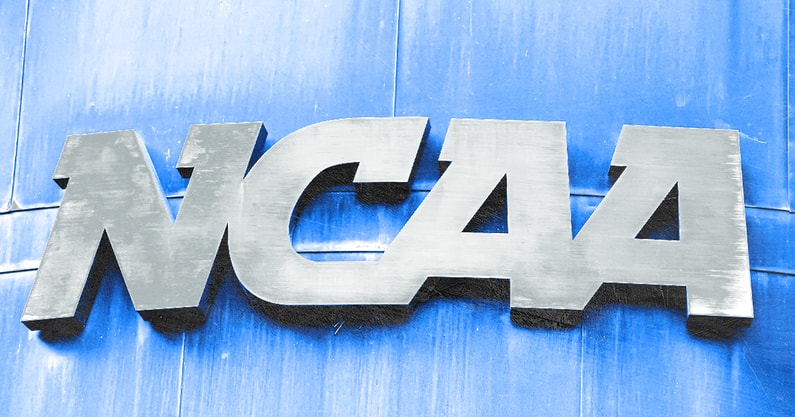Judge approves landmark House v. NCAA settlement

Fifty-nine months after the initial class-action House v. NCAA suit was filed, it has been resolved. Judge Claudia Wilken approved the House settlement on Friday in the U.S. Northern District of California, marking a landmark decision in the history of college sports.
Since the NCAA was founded in 1906, institutions have never directly paid athletes. That will now change with the settlement ushering in the revenue-sharing era of college sports. Beginning July 1, schools will be able to share $20.5 million with athletes, with football expected to receive 75%, followed by men’s basketball (15%), women’s basketball (5%) and the remainder of sports (5%). The amount shared in revenue will increase annually.
Power Four football programs will have roughly $13 to $16 million to spend on rosters for the 2025 season. Many schools have front-loaded contracts ahead of the settlement’s approval, taking advantage of contracts not being vetted by the newly formed NIL clearinghouse.
“Despite some compromises, the settlement agreement nevertheless will result in extraordinary relief for members of the settlement classes,” Wilken wrote in her 76-page final opinion. “If approved, it would permit levels and types of student-athlete compensation that have never been permitted in the history of college sports, while also very generously compensating Division I student-athletes who suffered past harms.”
Instead of facing $20 billion in back damages, the NCAA and Power Five conferences signed off on a 10-year settlement agreement that includes $2.776 billion in back damages. The NCAA is responsible for paying the amount over the next decade – $277 million annually. Roughly 60% will come from a reduction in distribution to institutions. The NCAA is tasked with closing the other 40%, which will come through reducing operating expenses. Some of the top athletes in recent memory will make millions.
The settlement also imposes new restrictions on college sports. An NIL clearinghouse will be established, titled “NIL Go” and run through Deloitte. All third-party NIL deals of $600 or more must be approved by the clearinghouse. If not approved, the settlement says a new third-party arbiter could deem athletes ineligible or result in a school being fined. In a gathering at the ACC spring meetings last week, Deloitte officials reportedly shared that 70% of past deals from NIL collectives would have been denied, while 90% of past deals from public companies would have been approved.
Speaking with sources on Friday, On3 has learned that multiple schools are sending over rev-sharing contracts, so deals are getting signed as soon as midnight.
“Because the alleged anticompetitive effect of the associated entity third-party NIL provisions has not been established, and because defendants advanced pro-competitive justifications for these NIL provisions at the final approval hearing, it is not clear that such provisions violate the Sherman Act under the rule of reason,” Wilken wrote in her decision on Friday. “Thus, the associated entity third-party NIL provisions do not preclude the court from granting final approval.”
Roster limits are also set to be introduced. Wilken recently pushed back on the limits automatically being put in place, stating that the House v. NCAA settlement would not move forward if roster spots were not grandfathered in. NCAA and power conference attorneys, along with plaintiffs’ attorneys, agreed on a plan to phase in roster limits.
Top 10
- 1New
Vince Marrow
Kentucky assistant to Louisville
- 2Hot
SEC Football predictions
ESPN predicts order of finish
- 3
Dick Vitale
Ranks Top 12 teams
- 4
Cale Stricklin
Plans to leave Auburn baseball
- 5Trending
'Save college sports'
Politician pleads with Trump
Get the On3 Top 10 to your inbox every morning
By clicking "Subscribe to Newsletter", I agree to On3's Privacy Notice, Terms, and use of my personal information described therein.
Under the plan, athletes who had their positions cut will be eligible for reinstatement at schools’ discretion. It also permits athletes who leave or are not retained by their current school would keep grandfather status at a new school. Proposed rosters include football (105), men’s and women’s basketball (15), baseball (34), men’s and women’s soccer (28), softball (25) and volleyball (18).
Questions remain around House settlement
And while the settlement will usher in a new era of college sports, plenty of questions continue to linger. Drafted conference membership contracts are circulating at the Power Four level. The agreements spell out that institutions must waive their right to sue the College Sports Commission, the new enforcement entity to be created following the House v. NCAA settlement approval.
The contracts are a direct shot at Tennessee’s new state law, which allows schools and their NIL collectives to continue to pay above the cap, creating a competitive advantage. Not signing the membership agreement could result in schools being kicked out of their conferences or risk being blackballed by the rest of the Power Four. The College Sports Commission, run by the Power Four, is also expected to hire a commissioner. Major League Baseball executive Bryan Seeley will take the role, the commission announced late Friday.
Many across college sports have expressed doubt that the settlement will be able to halt third-party NIL collective payments. Sources expect lawsuits surrounding Title IX, the rev-sharing salary cap and the newly founded NIL clearinghouse to be filed.
In a letter published on Friday night, NCAA president Charlie Baker called the settlement “a new beginning” for the governing body.
“Together, we can use this new beginning to launch college sports into the future,” Baker wrote in the letter to the membership. “… In the weeks ahead, we will work to show Congress why the settlement is both a massive win for student-athletes and a road map to legislative reform.”